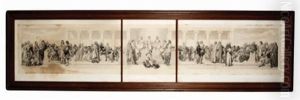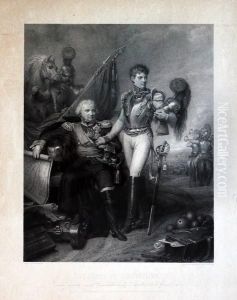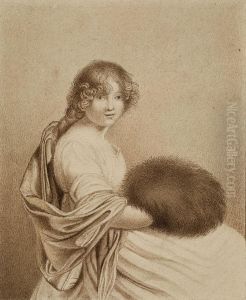Louis-Pierre Henriquel Dupont Paintings
Louis-Pierre Henriquel-Dupont, born in 1797 in Paris, France, was a distinguished 19th-century engraver whose body of work contributed significantly to the art of engraving during his lifetime. Coming from a period that saw tumultuous changes in France, from the aftermath of the French Revolution to the throes of the Napoleonic Wars and into the French Third Republic, Henriquel-Dupont's life and work were positioned at the crossroads of an evolving French society and its artistic expressions.
Henriquel-Dupont was profoundly influenced by the Neoclassical movement, which was predominant in his formative years. This influence is evident in the precision, clarity, and adherence to classical ideals seen in his engravings. He was especially renowned for his portrait engravings, which captured the likenesses and subtleties of character of his subjects with remarkable accuracy and depth. His skill in this genre made him a sought-after engraver for portraits of notable figures of his time.
Throughout his career, Henriquel-Dupont received considerable acclaim, including accolades and membership in prestigious art institutions. His works were exhibited widely, gaining recognition not only in France but also internationally. Despite the advent of photography, Henriquel-Dupont's engravings remained popular for their artistic qualities, which photography at the time could not replicate.
Henriquel-Dupont's legacy is not merely in the beauty of his works but also in his contribution to the development of engraving techniques. He was known to experiment with and refine engraving methods, pushing the boundaries of the craft to achieve greater detail and expressiveness.
He lived a long life, passing away in 1892, and witnessed significant historical and artistic changes over his 95 years. Today, Henriquel-Dupont's engravings are preserved in museums and collections around the world, serving as a testament to his skill and dedication to the art of engraving. His work continues to be studied and admired for its technical excellence and artistic beauty, securing his place in the annals of art history as one of the 19th century's master engravers.


